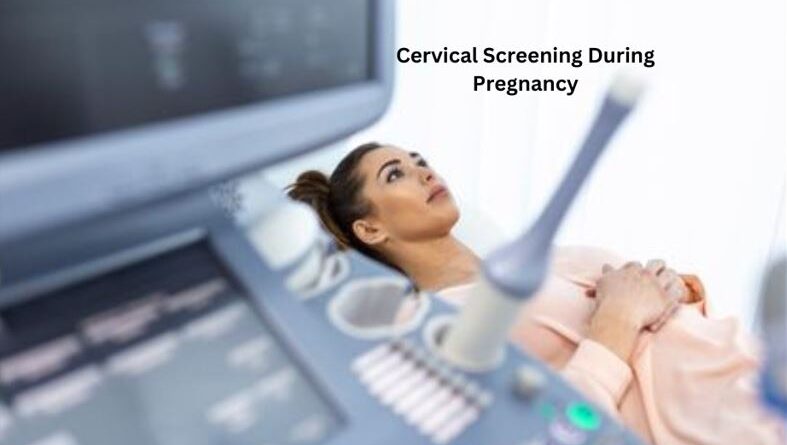Cervical Screening During Pregnancy
Key facts
- Routine cervical screening is the best way to protect yourself against cervical cancer.
- Cervical screening can be done at any time, including before becoming pregnant and during your pregnancy.
- You may be asked if you would prefer a self-collection vaginal swab.
- The cervical screening test is normally done every 5 years.
A routine cervical screening test is the best way to protect yourself against cervical cancer.
Each year in Australia, around 800 people are diagnosed with cervical cancer. About 1 in 5 of these people were never screened or were not up to date with screening.
You may be wondering if it’s safe to have a cervical screening test while you’re pregnant. You may want to know what the benefits are and if there are any risks.
What is cervical screening?
Cervical screening is a simple way to check the health of your cervix. The cervix is the opening of your womb (uterus) at the top of the vagina.
The cervical screening test can show if you have human papillomavirus (HPV). This virus can cause changes to the cells in your cervix. These changes can sometimes turn into cervical cancer.
The cervical screening test has replaced the Pap test (or ‘Pap smear’). The Pap test was offered every 2 years. The new screening test is normally recommended every 5 years.
How are cervical screening tests done?
The cervical screening test is usually done by a doctor, nurse, or other health care professional in a Medical centre near you But there is now also an option for you to do the test yourself.
Testing done by a healthcare professional
If your doctor or another healthcare professional is doing the test, an instrument called a speculum is gently put into your vagina. This lets healthcare professionals easily see your cervix.
A small brush is placed in the vagina to collect the sample.
The cervical screening test looks and feels the same as a Pap test. The test might feel a bit uncomfortable, but it shouldn’t hurt.
Self-collection’ cervical screening
Self-collection is when you collect your own sample for cervical screening.
Self-collection is done with a vaginal swab. Your doctor should outline the process. They will talk about the small chance of bleeding or spotting that may happen because of this test.
Self-collection is easy. You just need to put the swab a few centimetres into your vagina. Then you rotate the swab for 20 to 30 seconds before taking it out.
You can do the self-collection in a private place at the health clinic or doctor’s surgery.
If the self-collection test is positive, your doctor will ask you to go in for a second test. This is because the self-collection test only looks for HPV.
I’m pregnant; can I have a cervical screening test?
Cervical screening can be done at any time, including before becoming pregnant and during your pregnancy. Your pregnancy might be the first time your doctor can give you a cervical screening test.
People who have not been screened should have a cervical screening test, even if they are currently pregnant. Cervical cancer tends to show up in women who are not routinely screened.
Is there any danger to my baby?
It’s safe to have a cervical screening test during pregnancy. The benefits to your own health now and in the future outweigh any risks to your baby.
Is cervical screening part of standard antenatal care?
Yes. You may be asked about any past cervical screenings during your first antenatal visit. You may be offered cervical screening if you haven’t had one recently. The cervical screening test is important for keeping you healthy and well, throughout your pregnancy and beyond.
The test swab does not go into your uterus. A self-collected sample is collected from just inside your vagina.
Whatever the outcome of the screening test, it is generally safe to continue your pregnancy. This is because HPV infection during pregnancy doesn’t usually affect the baby. Even if there are abnormal cells on your cervix, it’s very rare for this to become cancer during a pregnancy.
What happens if my result is not normal?
If your test shows you have HPV, your doctor will keep a check on the infection. They will probably recommend further tests to watch for any changes to your cervical cells.
Even if you have an HPV infection, it normally takes 10 or more years for changes to become cervical cancer. Only about 1 in 20 pregnant women will have abnormal cervical cells after further tests.
What happens if my result is normal?
If your test is normal, it means that you don’t have HPV. All you need to do is go back for a routine cervical screening test in 5 years.
How often should I have a cervical screening test?
Cervical screening can be done every 5 years. You should have the test if:
- you’re aged between 25 and 74 years
- you have ever had sex
- you have a cervix
If you’ve had a Pap test in the past, your first cervical screening test should be 2 years after your last Pap test.
It’s best to start cervical screening when you’re 25 years old. Studies show there is no extra benefit if women are tested under the age of 25.
However, you should see your doctor as soon as possible if you have:
- pain during sex
- unusual bleeding or discharge
- If you have previously received an abnormal test result, you should continue to follow your doctor’s advice.
Resources and support
Talk with your doctor or midwife if you have any questions about cervical screening during pregnancy.

As a DIGITALTECHSIDE author, the majority of our articles have been focused on technology, blogging, business, lifestyle, social media, web design and development, e-commerce, money, health, education, entertainment, SEO, travel, and sports.
Contact us at digitaltechside@gmail.com if you have questions of anything.




